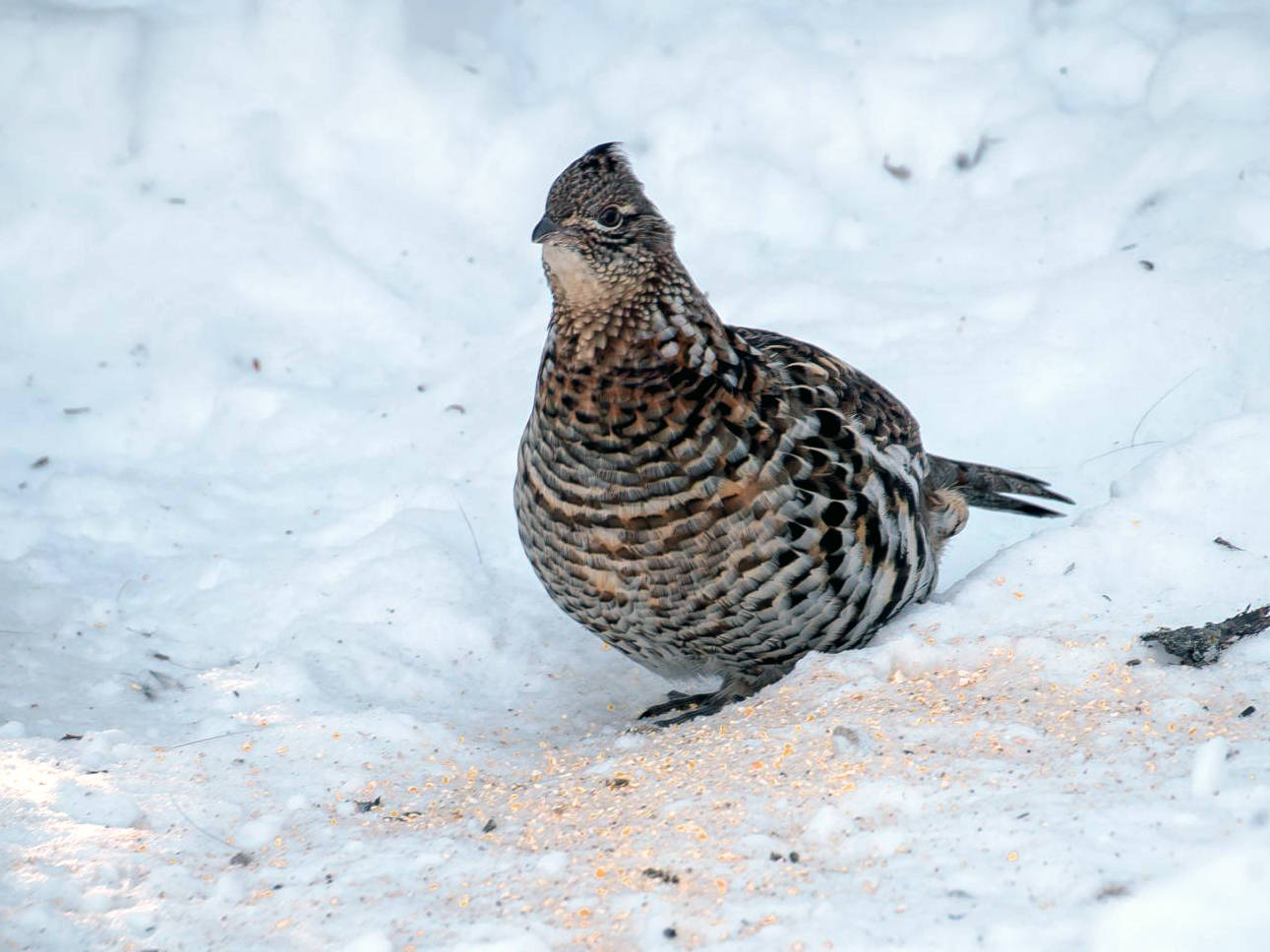By Mary F. Willson
For the Juneau Empire
The percussion section of an orchestra is usually stationed behind the other performers. The percussionists move smoothly from one noise-making instrument to another, banging, rattling, swishing, clacking and clicking, and thumping. They coordinate with the other performers and the conductor, to create a unified production.
The animal kingdom has its percussionists, too, although they are certainly not orchestrated to coordinate with each other. Each type does its thing for its own reasons, on its own time, and in its own place. Nevertheless, in a broad, ecological perspective, they are part of a unified whole, and the world would be a poorer place without them. Here’s a sampling of percussionists among the animals.
Some critters use tools, of a sort, to make a percussive noise. Woodpeckers drum on trees — preferably hollow — or rain spouts to advertise their territories and availability for mating. Beavers slap their broad tails on the water as a warning signal. Monkeys and bears clatter and snap branches as a threat to potential enemies. Horses may stomp their feet on the ground in a confrontation with other horses.
More commonly, animals use various body parts as noise-makers. Annoyed rattlesnakes give warning by shaking their tail rattles. A displaying male peacock may rattle and swish the feathers of his gaudy train. Click beetles have a spine on one segment of the thorax that can be snapped into a notch on the adjacent segment when the beetle flexes its body; a loud click is made when the spine is released. Release of the spine quickly straightens the flexed body and flips an escaping beetle into the air; the click startles a would-be predator .
Many insects, some spiders and even some birds drag a scraper over a ridged surface to make noise; this is called “stridulation.” Crickets rub one wing against another; grasshoppers rub a hind-leg on the forewing; a moth rubs a leg on a swollen part of the hind wing; some ants rub two abdominal segments together. Insects stridulate for various reasons, including mate attraction, territorial defense, as a warning signal, or (in ants, for example) a call for help from colony members. A species of neotropical manakin has two modified feathers on each wing, one with ridges and a stiff one to rub over the ridges. A displaying male raises his wings and shakes them back and forth very rapidly — perhaps 100 times a second! — to attract females.
A freshwater fish called a ‘drum’ has special muscles that rub on its swim bladder, making a grunting sound. Cicadas have special organs in their abdomens that make a buzzing sound when muscles pull them in and out of shape; the abdomen is mostly hollow, which intensifies the sound. When mature cicadas emerge from their larval life underground and ‘sing’ to attract mates, the racket can be deafening.
Snapping shrimp make a loud pop with one enormous claw. A very quick closing of that claw forces out a rapid jet of water. There is then a drop of pressure behind the jet and a bubble forms; this is known as cavitation. The bubble implodes with a loud pop when pressure from surrounding seawater rapidly rises again. The sonic shockwave from the popping bubble is used to stun or kill potential prey, such as a small fish or crab.
A ruffed grouse male advertises his territory and attracts females by standing with the tail braced on a log or small mound. He “drums” by repeatedly cupping the wings forward and then quickly pulling them back. The sudden compression and release of air pressure produces low-pitched sound as air rushes into a momentary vacuum (cavitation again). It’s a high-energy display, starting slowly and speeding up to a continuous thunder.
• Mary F. Willson is a retired professor of ecology.“On The Trails” is a weekly column that appears every Wednesday.

